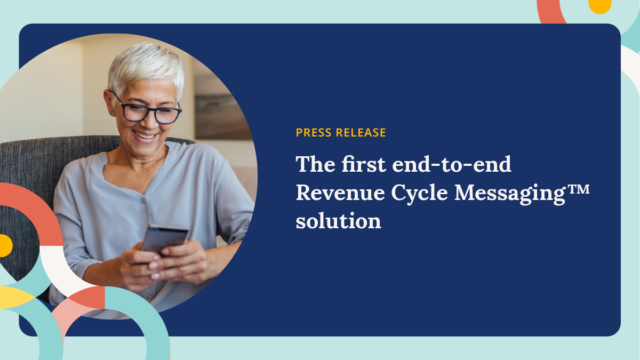In an era of healthcare consumerism, patients want access to providers as quickly and easily as possible. They don’t want to stand in long lines snaking through germ-infested waiting areas. They don’t want to wait on the phone listening to repetitive elevator music. They don’t want to sit in traffic to come to an office where there are no parking spots. Instead, they want access to healthcare services from the comfort of their own home, often using their own mobile device. The good news is that physicians can now offer this perk thanks to three new Current Procedural Terminology (CPT) codes that take effect Jan. 1:
- 99421 (online digital evaluation and management [E/M] service, for an established patient, for up to 7 days, cumulative time during the 7 days; 5-10 minutes) (pays approximately $16)
- 99422 (11-20 minutes) (pays approximately $31)
- 99423 (21 or more minutes) (pays approximately $50)
“Now, more than ever, patients are hungry for convenient healthcare experiences and on-demand access to their care providers,” says Toni Elhoms, CCS, CPC, CEO of Alpha Coding Experts LLC, a coding consulting company in Orlando, Fla. “In the digital era, having this type of access will increase both patient engagement and satisfaction.”
For example, an established patient presented to the clinic on Jan. 10, 2020, with a urinary tract infection. The physician prescribes an antibiotic and tells the patient to send a secure message through the portal if symptoms persist. The provider subsequently bills CPT code 99213. Ten days after the visit, the patient sent the provider a secure message stating her symptoms were worsening, and that she would like to try another antibiotic. The physician reviews the patient’s history and current medications, including a relatively long list of allergies, sends a new prescription to the pharmacy, and responds to the patient through the portal. The e-services total six minutes, and the provider bills CPT code 99421.
Where it gets tricky is when the physician performs the digital E/M service in multiple intervals or even over multiple days. These services are time-based, and physicians must be able to demonstrate through their documentation exactly what they did and for how long, says Elhoms. “Most EHRs have an internal feature that can be leveraged to track the time … If this option doesn’t exist, an Excel spreadsheet can also work,” she adds.
Here’s a bit more about these digital health services:
- Patients must initiate them. Most often, the communication will come through a secure patient portal, though secure email and other HIPAA-compliant digital applications are also possible venues, says Elhoms. The key here is ‘patient-initiated.’ Patients won’t initiate the services if they don’t know what a practice offers them. Elhoms recommends sending out letters to patients, posting appropriate signage, designing a one-page flyer, and offering reminders during the scheduling and check-in process. Engaging physicians to include these new services in their after-care instructions is also important, as is leveraging social media and posting educational videos about the e-visit option.
- Physicians must perform an actual E/M service. This means they must evaluate, assess, and manage the patient—not simply communicate test results or schedule appointments or consultations.
- Patients must be established. However, the presenting problem may be new to the physician.
- They’re cumulative. This means they’re rendered over a seven-day period starting with the physician’s initial, personal review of the patient-generated inquiry. The cumulative telehealth service also includes a review of the patient’s records or pertinent data, interaction with other clinical staff regarding the patient’s problem, development of management plans, and subsequent communication with the patient via online, telephone, email, or other digitally-supported communication and telehealth platforms. Note that clinical staff time does not count toward the cumulative total—only the physician’s time counts.
- There are other important restrictions. For example, physicians can’t report these online digital EM services when a separately-reported E/M service occurs within seven days of the initiation of the online digital E/M service. This includes E/M visits and procedures provided through synchronous telemedicine visits using interactive audio and video telecommunication equipment. Likewise, if a patient initiates an online digital inquiry for the same or a related problem within seven days of a previous E/M service, the physician cannot report the online digital service. They can report the online digital service for a new and unrelated problem.
- Don’t confuse them with other virtual care codes. This includes G2010 (which requires healthcare providers to review photos or video information submitted by the patient to determine whether a visit is required) and G2012 (which requires a telephone or video check-in with the patient to determine whether a visit is required). The new codes don’t require the review of photos or videos, says Elhoms.
Another tricky aspect of these codes? Obtaining consent from patients who aren’t accustomed to being charged for non-face-to-face services, says Elhoms. According to the CY 2020 Physician Fee Schedule Final Rule, CMS permits physicians to obtain a single annual consent for all communication technology-based services; however, this doesn’t necessarily solve the problem of unexpected medical bills.
There’s no doubt that patients want digital access to their providers. However, practices that successfully implement these services are those that can articulate why digital E/M services aren’t free. It’s a paradigm shift. Physicians still spend time reviewing records, assessing risk, and determining a course of action—and patients still get the same high-quality care they always did. The only difference is that the interactions are virtual and asynchronous, says Elhoms. That doesn’t negate the time a physician spends, and naturally, that time translates to money, she adds.
If you’re wondering about the impact of changing patient expectations and how to address them, download this white paper from Solutionreach, “The Patient-Provider Relationship Study.”



